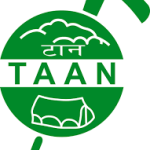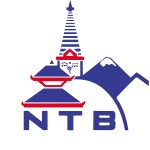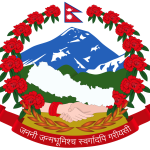Nepal could be a paradise for each travel enthusiast all round the globe. With its splendid aura and variety, Nepal ne’er fails to surprise each traveller. Being a mountain range country with eight of the ten highest peaks, Nepal represents Associate in Nursing astounding confluence of religions, languages, and cultures.
Visit the historic temples amongst the best peaks of the mountains of Nepal, furthermore because the exotic life and active town life, soar with the hawk, and find blessed by Kumar – the living deity. Nepal is therefore superb, you’ll ne’er have enough exploring the sweetness of this tiny country engulfed within the high mountain chain.
Here is Everything you would like to understand concerning this tiny country lying on the lap of the Himalayas:
Nepal | A Country Where Peace Thrives
Nepal is blessed made natural attributes and complex cultural history. over anything it’s the birthplace of Buddha (light of Asia) UN agency crystal rectifier the planet towards peace and serenity and also the land of Mt. Mt. Everest (Sagarmatha ), the highest of the planet. it’s a sovereign, freelance mountain chain kingdom with Republic of India within the east, west south, and also the Tibetan autonomous region of p.r. china within the north.
People And Culture
According to the statistics of the National census 2011, Kingdom of Nepal is home to quite twenty six.6 million folks. Altogether one hundred and one ethnic teams and ninety two spoken languages area unit there. each cluster of individuals has its own natural language. All the ethnic and non secular communities have equal rights to take care of, practice, promote and preserve their spiritual practices. In Government still as personal offices, English is employed by a majority of educated folks. The folks in Kingdom of Nepal area unit divided into Himalayan folks, mid-hills folks, and terai folks on the idea of their inhabitants and origins.
Foods And Cuisines
Nepal has completely different feeding habits from European the opposite varied countries. Especially. Nepalese preparation includes a range of cuisines primarily based upon quality, soil, and climate with reference to Nepal’s cultural diversity and geographics. Meals square measure historically eaten up sitting or squatting on the ground and eat with the proper hand on the plate. Before having the meal, we tend to Nepalese wash our hands and face. In Nepal, it’s necessary to clean your face and brush your teeth.
Currency And Cards
Nepal’s official currency is that the Nepalese monetary unit or NRP & Rs.
The Nepalese monetary unit comes in one, 2 coins, and 5, 10, 20, 50, 100, 500, and one thousand rupee notes.
There square measure smaller coins referred to as “paisa” that you may bump into however extremely ne’er used. they are available in one, 5, 10, 25, and fifty subunit coins.
Travel Insurance
Nepal Travel Insurance – Why do Travellers to Nepal Need It?
Nepal- the country that lies underneath the foothills of the mighty chain of mountains. Nepal is best renowned for its natural beauty, breathless scenery, majestic views of the chain of mountains, pristine lakes, and lots of a lot of. For the demon-ridden somebody and journey seekers United Nations agency need thrill and neurotransmitter, visiting Nepal are going to be the dream return true expertise. Nepal is that the ideal destination to expertise journey, thrill, and neurotransmitter. Yearly thousands of demon-ridden travelers from all round the globe build their thanks to this natural paradise country seeking to beat the height of the very best mountain within the world -Mt Everest, trailing on off-the-beaten ways and isolated trails, rafting on a roaring watercourse, jumping a hundred and sixty m down into the deepest Saint George, or sport through parcel hills and mountains exploring the distinctive culture and wealthy cultural heritage.







